
Understanding Toxicity Levels in Giant Succulent Varieties

Introduction
Giant succulents have gained immense popularity in recent years due to their striking appearance and relatively low maintenance requirements. These vibrant plants come in various shapes, sizes, and colors, making them an attractive addition to indoor and outdoor gardens alike. However, while they are generally appreciated for their aesthetic appeal, it's crucial to understand that some giant succulent varieties can possess varying levels of toxicity, which may pose risks to humans and pets.
In this article, we will delve into the fascinating world of giant succulents, exploring their potential toxicity levels, the symptoms of poisoning, and the necessary precautions to keep in mind during their care and handling. By the end of this article, you will be equipped with the knowledge to appreciate these remarkable plants while also ensuring a safe environment for yourself and your loved ones.
Understanding Succulent Toxicity
Toxicity in plants generally refers to their ability to cause harm when ingested or touched. Toxic compounds present in some species of giant succulents can affect the body in various ways, leading to a range of symptoms, from mild irritations to severe health problems. It is essential to understand that not all succulents are harmful; many succulent varieties are safe and non-toxic. However, several giant varieties contain alkaloids, saponins, or oxalates that can induce toxic reactions.
The Role of Toxic Compounds in Plants
Plants produce toxic compounds as a defense mechanism against herbivores and pests. For giant succulents, these compounds may deter animals from munching on their stems or leaves, thus ensuring survival. Alkaloids, for instance, can interfere with the functioning of the nervous system, while saponins can disrupt cellular membranes. In contrast, some plants use their toxins to attract beneficial insects or microorganisms that provide protection against threats.
Moreover, toxicity levels can vary significantly not only between different succulent species but also within the same species due to several factors. These can include the plant’s age, environmental conditions, and the specific parts of the plant that are consumed. Understanding these dynamics is essential for anyone interested in cultivating giant succulents.
Common Toxic Giant Succulent Varieties
Several giant succulent varieties are particularly known for their toxic properties. Here are a few to be aware of:
Aloe Barbadensis (Aloe Vera): While known for its health benefits, the latex found in the leaves can be toxic if ingested in large quantities. It can cause gastrointestinal distress, including diarrhea and cramps.
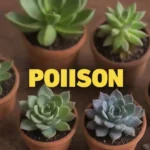 The Truth About Succulent Poison: Myths and Facts Debunked
The Truth About Succulent Poison: Myths and Facts DebunkedEuphorbia Lactea (Dragon Bone Cactus): This giant succulent contains latex sap that can cause skin irritation and may be harmful if ingested, leading to nausea and vomiting.
Kalanchoe (Kalanchoe spp.): Known for its vibrant flowers, this succulent can be toxic to pets, particularly dogs and cats. Ingestion can lead to gastrointestinal upset and, in severe cases, heart problems.
Being informed about these varieties is crucial for preventing accidental poisoning, especially if you have children or pets at home.
Recognizing Symptoms of Poisoning
Recognizing the symptoms of poisoning is key to ensuring a swift response should an accident occur. Symptoms can vary depending on the plant species and the quantity ingested but usually include gastrointestinal, dermatological, and neurological signs.
Gastrointestinal Symptoms
Ingestion of toxic giant succulents commonly leads to gastrointestinal symptoms. Signs might include:
- Nausea and Vomiting: Often the first indicators of poisoning, nausea can lead to vomiting as the body attempts to rid itself of the toxins.
- Diarrhea: Many toxic succulents contain compounds that can irritate the digestive tract, leading to loose stools.
- Abdominal Pain and Cramping: Following ingestion, discomfort can arise in the abdominal area as the body reacts to the toxic substances.
If these symptoms appear after exposure to a giant succulent, it is essential to seek medical advice promptly.
Skin and Eye Irritation
Handling certain toxic succulents can also lead to symptoms that affect the skin or eyes. The latex or sap in these plants can cause:
 Are Your Succulents Safe? A Deep Dive into Toxicity Levels
Are Your Succulents Safe? A Deep Dive into Toxicity Levels- Skin Irritation: Redness, swelling, and rashes may occur after contact with the sap, especially for individuals with sensitive skin. For most people, washing the affected area will alleviate the irritation.
- Eye Irritation: If sap gets into the eyes, it can cause intense discomfort, redness, and in some cases, temporary vision issues. Flushing the eyes with clean water and seeking medical attention is advisable.
Understanding these symptoms can help in quickly identifying potential poisoning and responding appropriately.
Neurological Symptoms
Some giant succulents, particularly those with a high concentration of alkaloids, can trigger neurological symptoms upon ingestion. These symptoms may include:
- Dizziness and Confusion: Affected individuals might experience vertigo or difficulty concentrating due to decreased brain function.
- Tremors and Seizures: In severe cases, particularly with large ingestions, there is a risk of seizures or involuntary muscle contractions. This is critical in powerfully toxic species.
- Respiratory Distress: Rarely, significant toxicity might lead to issues with breathing or an altered state of consciousness.
If neurological symptoms manifest, it is crucial to seek emergency medical help immediately, as these can be life-threatening conditions.
Safety Precautions when Dealing with Giant Succulents

To minimize the risks associated with toxic giant succulents, consider the following safety precautions. These can help in maintaining a healthy and safe environment for everyone in your household.
Educate Yourself and Others
Knowledge is your best defense. Educating yourself about the succulent varieties you plan to keep is essential. Familiarize yourself with the potential toxicity levels of these plants and their symptoms to know what to watch for. When bringing succulents into your home, inform family members, especially children, about the plants' safety.
Additionally, providing educational resources on identifying the plants can prevent unintentional exposure. Labels can help to remind everyone about which plants should be handled cautiously.
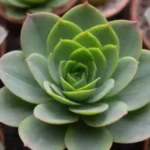 How to Handle Succulents Safely: A Toxicity Overview
How to Handle Succulents Safely: A Toxicity OverviewCreate a Safe Environment
If you have pets or young children, it is wise to keep toxic plants out of their reach. Consider placing giant succulents on higher shelves or in hanging pots. This creates a physical barrier, deterring curious little fingers and paws from touching or tasting the plants. Alternatively, if you prefer to display your plants on surfaces that are within easy reach, choose non-toxic varieties to avoid potential incidents altogether.
First Aid and Medical Preparedness
When dealing with potentially toxic plants, it's essential to have a first aid plan in place. Keep contact information for the local poison control center handy and familiarize yourself with the necessary first-aid procedures for plant-related poisoning. In cases of ingestion, do not attempt to induce vomiting unless instructed by a medical professional. If dermal or ocular exposure occurs, rinsing with plenty of clean water can sometimes alleviate symptoms.
Being prepared can make a significant difference in ensuring the safety of yourself and your loved ones when dealing with giant succulents.
Conclusion
Understanding the toxicity levels in giant succulent varieties is paramount for fostering a safe environment for both people and animals. While the aesthetic appeal of these plants can enhance indoor and outdoor spaces, some varieties carry inherent risks that should not be overlooked. By familiarizing yourself with the toxic compounds present in certain giant succulents, recognizing symptoms of poisoning, and taking essential safety precautions, you can create an informed and safe gardening experience.
In conclusion, the beauty and uniqueness of giant succulents don’t have to overshadow the importance of understanding their potential risks. When treated with care and respect, these plants can bring joy and beauty into our lives without compromising safety. As with any aspect of gardening, knowledge is critical—especially as we explore the intriguing and sometimes guarded world of giant succulents. So, whether you're a seasoned gardener or a curious beginner, remember to stay informed and enjoy the stunning diversity of these remarkable plants.
If you want to read more articles similar to Understanding Toxicity Levels in Giant Succulent Varieties, you can visit the Toxicity Levels category.


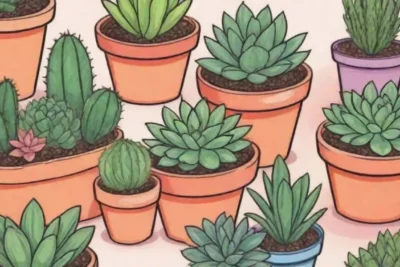
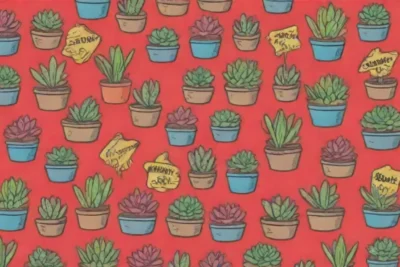
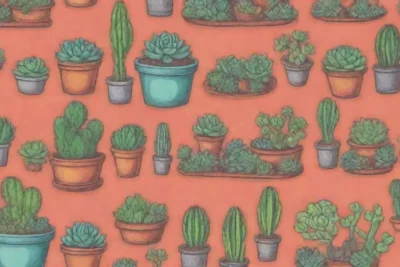
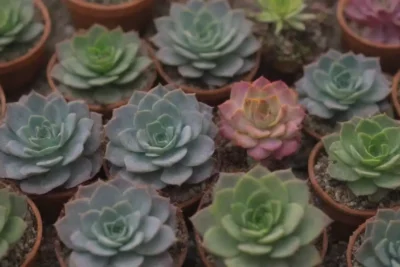
You Must Read